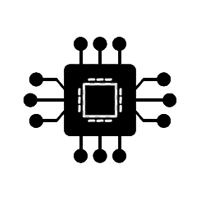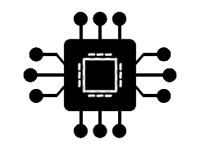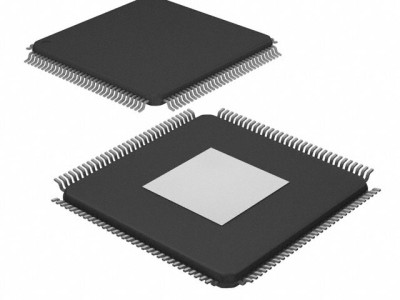
Understanding the TL431 IDR and Common Problems
The TL431IDR is a three-terminal adjustable shunt voltage regulator that plays a crucial role in voltage regulation circuits, feedback loops, and Power supplies. It is popular in applications such as power adapters, battery chargers, LED driver s, and other voltage-sensitive circuits. With its ability to maintain a fixed voltage with adjustable feedback, the TL431IDR has gained widespread use in both commercial and DIY electronics.
However, like any electronic component, it may encounter problems, especially when improperly configured or used in unsuitable conditions. Understanding the most common issues with the TL431IDR and their solutions will help ensure the smooth operation of your circuits. Let’s take a closer look at some of the most frequent problems and how you can resolve them.
1. Incorrect Output Voltage
One of the most common issues when using the TL431IDR is an incorrect output voltage. The TL431IDR is designed to regulate the voltage based on the feedback received from the surrounding circuit, and the output voltage depends on the resistor network in place. If you notice that the output voltage is not as expected, several factors could be at play.
Solution:
Check the feedback resistors: The TL431IDR requires a specific resistor network between the anode, cathode, and reference pins. Ensure that the resistor values are correct according to the desired output voltage. You can refer to the TL431 datasheet to calculate the resistor values needed for your design.
Verify the reference voltage: The reference pin of the TL431IDR needs to receive the correct reference voltage (typically 2.495V). If this voltage is too high or low, the output will be incorrect. Use a precise voltage source to set the reference pin accurately.
2. Oscillation or Instability
Another issue commonly observed is oscillation or instability in the voltage regulator circuit. This can happen when the TL431IDR is not properly compensated or when there is too much noise in the feedback loop. Oscillation can lead to erratic voltage output, which is undesirable in most applications.
Solution:
Add compensation capacitor s: If oscillation occurs, try adding a small capacitor (typically in the range of 10nF to 100nF) between the output and reference pin or between the output and ground. This will help stabilize the feedback loop and prevent high-frequency oscillations.
Increase decoupling capacitance: Ensure that proper decoupling Capacitors are placed across the power supply inputs (anode and cathode) of the TL431IDR. A 100nF ceramic capacitor placed close to the device can help reduce noise and stabilize operation.
Check PCB layout: A poor PCB layout can contribute to oscillations, especially if there are long traces or inadequate grounding. Ensure that the traces are as short as possible and that the ground plane is solid and continuous.
3. Overheating of the TL431IDR
Overheating can be another sign that something is wrong with the circuit, as the TL431IDR is designed to operate within specific thermal limits. When excessive heat is generated, the device might go into thermal shutdown or its performance may degrade.
Solution:
Check the power dissipation: The TL431IDR operates as a shunt regulator, which means it dissipates power as heat when the input voltage is higher than the regulated voltage. Calculate the power dissipation based on the input and output voltage, and ensure that the device is within its thermal limits.
Improve heat sinking: If overheating is an issue, consider adding a heatsink to the TL431IDR, especially if it is dissipating a significant amount of power. Alternatively, you can use a larger package or a low-dropout regulator (LDO) if thermal issues persist.
Reduce input voltage: Another option is to lower the input voltage to reduce the power dissipation. The TL431IDR performs better when the voltage difference between the anode and cathode is minimized.
4. Failure to Start or Power Up
Sometimes, the TL431IDR may fail to start up properly, resulting in no output voltage or incorrect operation. This could be due to issues such as insufficient input voltage or incorrect connections.
Solution:
Ensure minimum input voltage: The TL431IDR requires a minimum input voltage to start regulating, typically around 3V above the desired output voltage. If the input voltage is too low, the TL431IDR may not start properly. Check the input voltage and ensure it is above the minimum threshold.
Check the resistor network: The TL431IDR requires a feedback resistor network to regulate voltage. If the resistors are incorrectly selected or not connected properly, the device may fail to start. Verify that the resistor network is correctly implemented and that there are no short circuits or open connections.
Advanced Troubleshooting and Further Solutions
While the issues outlined in Part 1 are relatively common, more complex issues can arise when designing circuits with the TL431IDR. These problems often require more advanced troubleshooting techniques to resolve. Below are some additional troubleshooting steps that can help you get your TL431IDR-based designs up and running smoothly.
5. Input Voltage Clipping
In some cases, the TL431IDR may exhibit input voltage clipping, where the output voltage is fixed despite changes in the input voltage. This can be due to the TL431IDR’s internal reference not being properly matched to the input voltage range.
Solution:
Increase input-to-output voltage difference: The TL431IDR works best when there is a sufficient difference between the input and output voltages. Ensure that the input voltage is high enough to allow the TL431IDR to regulate properly.
Check the load conditions: A heavy load might also cause voltage clipping. If the load is too demanding, consider using an additional regulator or adjust the circuit to limit the load current.
6. Incorrect Shunt Regulation Behavior
The TL431IDR operates as a shunt regulator, but sometimes, incorrect shunt regulation can occur due to improper feedback or power supply conditions. When this happens, the TL431IDR might not maintain the intended output voltage or it could enter an undefined state.
Solution:
Verify the shunt operation: The TL431IDR is designed to work in shunt mode, meaning it will sink current to maintain the regulated voltage. If it is connected to a source that cannot supply sufficient current, it may fail to regulate properly. Ensure that the source can provide the necessary current, or adjust the resistor network accordingly.
Test with varying load conditions: Test the circuit with different load conditions to verify that the TL431IDR is able to maintain its output voltage across a range of loads. If the output voltage fluctuates significantly under load, the resistor network or feedback design might need adjustment.
7. Failure Due to External Circuitry
Sometimes, the issue may not be with the TL431IDR itself but with the surrounding external circuitry. Capacitors, inductors, or other components in the power supply may be faulty or improperly sized, which can affect the TL431IDR’s performance.
Solution:
Inspect external components: Inspect all components around the TL431IDR, including capacitors, diodes, and inductors. Ensure they are functioning correctly and that no components are damaged or out of spec.
Use a multimeter and oscilloscope: Use a multimeter to check the continuity of components and an oscilloscope to verify the voltage waveform at various points in the circuit. This can help you detect abnormal behavior, such as noise or ripple that might affect the TL431IDR.
8. General Design Tips for Reliable TL431IDR Operation
In addition to the troubleshooting solutions above, some general design guidelines can help improve the reliability of your TL431IDR circuits.
Solution:
Use proper decoupling: Always use appropriate decoupling capacitors (typically 100nF ceramic capacitors) at the input and output of the TL431IDR to reduce noise and improve stability.
Place components close to the device: Minimize trace lengths and place components close to the TL431IDR to reduce parasitic inductance and resistance, especially in high-frequency applications.
Design for thermal management: Ensure that the TL431IDR has adequate thermal dissipation to avoid overheating and ensure reliable operation over time.
By following these troubleshooting techniques and solutions, you can address common issues with the TL431IDR and ensure that your power supply circuits operate smoothly.
If you are looking for more information on commonly used Electronic Components Models or about Electronic Components Product Catalog datasheets, compile all purchasing and CAD information into one place.
Partnering with an electronic components supplier sets your team up for success, ensuring the design, production, and procurement processes are quality and error-free.


